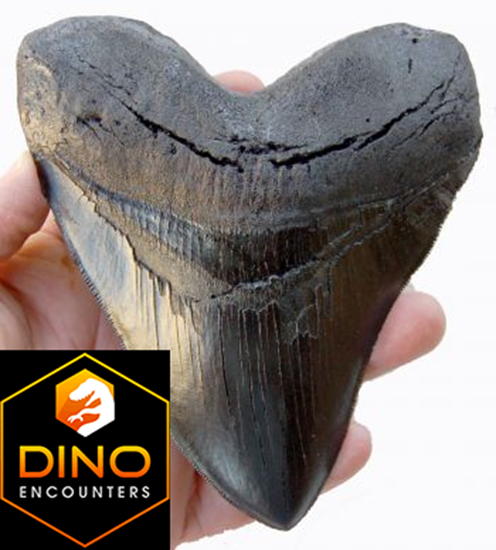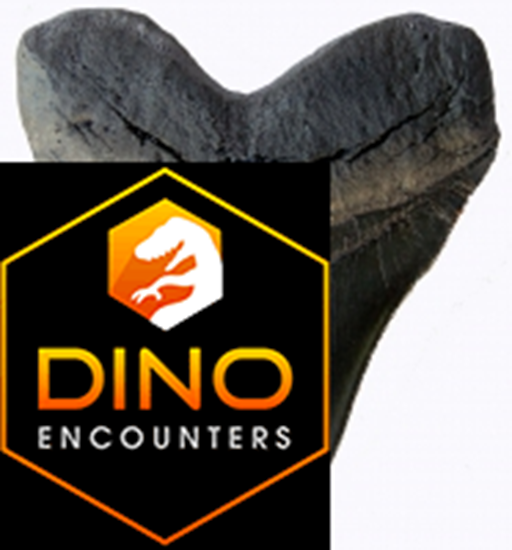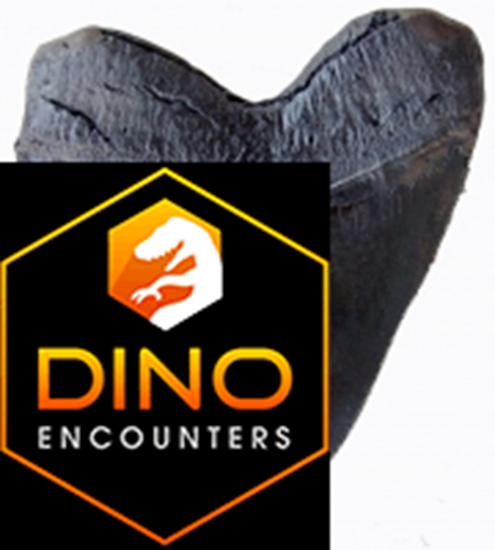Dino Encounters Store - 5.5 Inch Megalodon Shark Tooth Replica
$30.00
Description
This beautiful replica Megalodon tooth is 5.5 inches long on the longest side, 5.13 inches across the root 1.15 inches thick and weighs 4.3 ounces.
This is your opportunity to own an authentic replica Megalodon tooth, the most iconic shark of all time. Imagine holding this tooth in your hand. Envision the power of the living shark that once had this tooth. Feel the serrated edges that cut through flesh and bone. Imagine the bone crushing force of its bite. Hold this tooth in your hand and know the terror its prey must have felt 5 million years ago.
Fossil Megalodon teeth are relatively common in some areas of the world, such as the coastal regions of the southeastern United States. Most adult Megalodon teeth fall into the 4-5” size range. As teeth approach 6 inches they become rare, representing far less than 1% of teeth. These 6 inch teeth obviously represented extremely large individual sharks.
Megalodon (Carcharocles megalodon), meaning "big tooth", is an extinct species of shark that lived approximately 23 to 3.6 million years ago, during the Early Miocene to the Pliocene. It was formerly thought to be a member of the family Lamnidae and a close relative of the great white shark (Carcharodon carcharias). However, it is now classified into the extinct family Otodontidae, which diverged from the great white shark during the Early Cretaceous. Its genus placement is still debated.
While regarded as one of the largest and most powerful predators to have ever lived, megalodon is known from fragmentary remains, and its appearance and maximum size are uncertain. Scientists differ on whether it would have more closely resembled a stockier version of the great white shark, the basking shark (Cetorhinus maximus) or the sand tiger shark (Carcharias taurus). Most estimates of megalodon's size extrapolate from teeth; with maximum length estimates up to 18 meters (59 ft) and average length estimates of 10.5 meters (34 ft). Estimates suggest their large jaws could exert a bite force of up to 25,000 to 40,000 lb). Their teeth were thick and robust, built for grabbing prey and breaking bone.
This is your opportunity to own an authentic replica Megalodon tooth, the most iconic shark of all time. Imagine holding this tooth in your hand. Envision the power of the living shark that once had this tooth. Feel the serrated edges that cut through flesh and bone. Imagine the bone crushing force of its bite. Hold this tooth in your hand and know the terror its prey must have felt 5 million years ago.
Fossil Megalodon teeth are relatively common in some areas of the world, such as the coastal regions of the southeastern United States. Most adult Megalodon teeth fall into the 4-5” size range. As teeth approach 6 inches they become rare, representing far less than 1% of teeth. These 6 inch teeth obviously represented extremely large individual sharks.
Megalodon (Carcharocles megalodon), meaning "big tooth", is an extinct species of shark that lived approximately 23 to 3.6 million years ago, during the Early Miocene to the Pliocene. It was formerly thought to be a member of the family Lamnidae and a close relative of the great white shark (Carcharodon carcharias). However, it is now classified into the extinct family Otodontidae, which diverged from the great white shark during the Early Cretaceous. Its genus placement is still debated.
While regarded as one of the largest and most powerful predators to have ever lived, megalodon is known from fragmentary remains, and its appearance and maximum size are uncertain. Scientists differ on whether it would have more closely resembled a stockier version of the great white shark, the basking shark (Cetorhinus maximus) or the sand tiger shark (Carcharias taurus). Most estimates of megalodon's size extrapolate from teeth; with maximum length estimates up to 18 meters (59 ft) and average length estimates of 10.5 meters (34 ft). Estimates suggest their large jaws could exert a bite force of up to 25,000 to 40,000 lb). Their teeth were thick and robust, built for grabbing prey and breaking bone.



